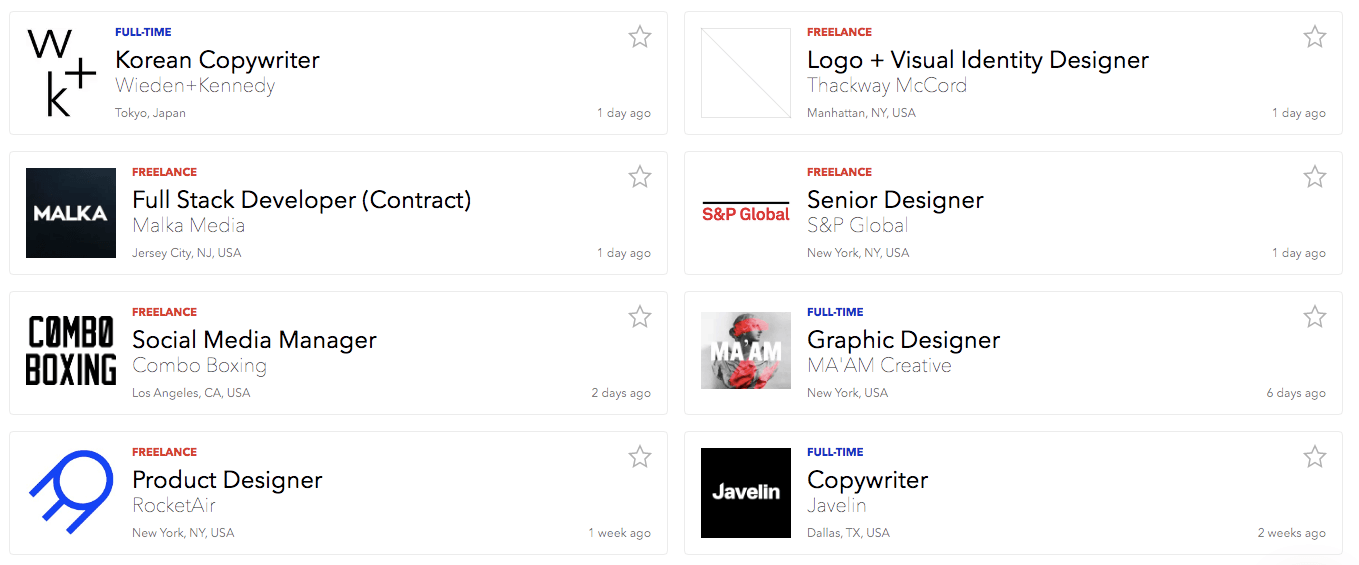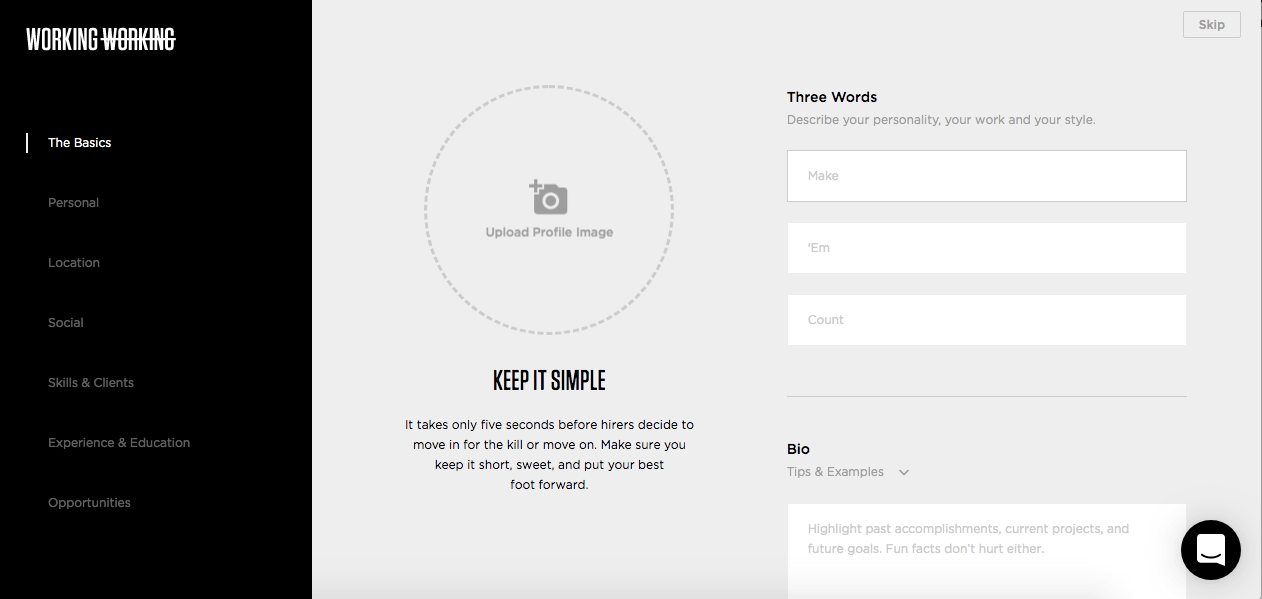 The freelance world can be a competitive space with all the job opportunities and platforms available online.
The freelance world can be a competitive space with all the job opportunities and platforms available online.
There is also the challenge of finding clients and high commission fees when joining freelance platforms.
If you’re in the creative freelance industry, you want to be part of those big agencies and companies but how?
Working Not Working is a brainchild of two professionals from the creative industry that aims to connect creative talent to the most innovative companies.
But is Working Not Working a legit platform for you as a writer, editor, illustrator, animator, or director? Or is it another of those websites where you end up not working on any projects?
This Working Not Working review will look into the details to help you decide if you should be working through the website or not.
Working Not Working at a Glance
-
Tools
-
Usability
-
Income Potential
Summary
Working Not Working is a freelance platform made by creative professionals for the creative industry to find jobs in top companies. Some of these companies include Google, Apple, Facebook, Droga5, Airbnb, IDEO, The New York Times, Kickstarter, Wieden+Kennedy, and Collins.
It won’t cost you anything to join but you will need to make your profile stand out as most of the members are some of the most awarded or respected freelancers in the industry. The site began as an invite-only website that grew into more than 30,000 freelancers.
It is definitely a legit option if you are looking for more work and have the skills to compete on the platform.
However, it is not for everyone and unless you really stand out, it might be difficult to find jobs there.
What is Working Not Working?
Working Not Working was founded back in 2012 with a mission to “eliminate the obstacles between creative people and opportunity.”
Its two founders are no strangers to the creative industry as both have been working in advertising agencies before creating the company.
Adam Tompkins was a creative director at DraftFCB and also worked at Amalgamated. Justin Gignac worked as a freelancer and as a former art director at agencies like Toy, Fallon, and Ogilvy & Mather.
Given their background, you know they definitely know what it’s like to work as creative professionals and find clients and projects.
They wanted to build a community where you are among the best, most talented, and motivated freelancers to provide quality service to top brands.
The name Working Not Working actually comes from the email signature of Justin Gignac that read “Currently WORKING”.
He later created an animated GIF on his freelance portfolio that either read “Working”, “Not Working”, or “Working Soon”. This was to let clients know if he was available for work.
In 2018, the company acquired The Backscratchers, a UK-based agency that sources creative freelancers for commercial projects. This expanded their reach to UK clients.
So if you’re wondering if the company is legit, then the simple answer is yes. The next question would be is it for you?
Working Not Working is a platform for both creative freelancers looking for work and companies or agencies looking to hire professionals for their project.
In this review, I will focus on work for creative freelancers and how good your opportunities are on the platform as a creative.
What is it not?
Working Not Working considers themselves as the “Linkedin for the top 10% of Creatives”.
Given that this appears to be a curated community, I think it’s best to look into what the platform is NOT for you to know if it’s for you.
1. Not your typical job board
When you go to a freelance job board, you will typically see the position, the details of the job, and the salary. Working Not Working job postings go beyond that.

There is a wide range of jobs from top companies in the creative industry.
The company believes you don’t have to detail all the job responsibilities since the person you want to hire probably already knows what to do.
So instead of just having the job details and experience required, you get to know more.
Companies can describe the job and indicate the skills they require. They can also include links so the freelancer can check out their social media sites and company website.
But what makes the job posting stand out is the perks section. Here companies can indicate the perks they feel freelancers would want. For example, some have “no assholes” and “beer” indicated on their job posting. Sounds fun, right?

Job postings include perks you get like beer, food or no assholes.
So when you view a job post on the platform, you know what you’re getting into. You can then apply as long as you have completed your Working Not Working profile.
Some of the types of professionals they are looking for are Animators, Architects, Art Directors, Artists, Cinematographers, Copywriters, Creative Directors, Creative Technologists, Designers, Developers, Directors, Editors, Furniture Designers, Game Designers, Illustrators, Industrial Designers, Lettering Artists, Motion Designers, Photographers, Producers, Product Designers, Retouchers, Set Designers, Type Designers, Typographers, UX/IA Designers, VFX Artists, and Writers.
2. Not your ordinary creative profile
Working Not Working states that they have more than 30,000 highly curated freelancers from around the world.
And if you create your profile, don’t expect that it’s the basic information and portfolio setup.

You have to describe yourself in three words on your profile.
When Working Not Working was launched, it was an invite-only community. This means you can only join and create a profile if you get an invite from another creative in the platform. This was done to curate and filter the freelancers coming into the site.
Referrals are quite common in the creative industry. One graphic designer would recommend a fellow designer if they have worked together or they know the quality of each other’s work.
The site started by inviting 300 of the best freelancers the founders knew in their years in the creative industry. They gave each one a few invites they sent to the best people they knew. And so the company grew.
There is no indication right now that it is still an exclusive invite-only platform.
Today, you can simply click the Creative Sign-up link and start creating your profile. But be ready to fill out your not so typical profile form.
First, you are required to upload a photo, then describe yourself in three words. As the form says, “make ‘em count”.
These three words can either describe your personality, your work, or your style. Right here you can see that you can’t make your profile too serious.
They’re not looking for a profile with just credentials and personal information.
You then indicate your rate, work experience, and the countries where you can legally work. You can also indicate if you’re willing to travel for a project.
The last section you need to complete in your profile is the portfolio section. Here, you can add up to 12 projects you want to showcase to your potential clients.

You can include up to 12 projects you’ve done in the past on your profile.
This makes Working Not Working best for seasoned creatives or experienced freelancers.
Each project you upload on the portfolio section should include the project title, description, project link (if any), the role you performed, the company you worked for, the industry of the project, and any Working Not Working collaborators (if applicable).
After you’ve completed your profile, you will be assigned a member id# that will be used throughout the website. If you look around the site, even the logo design carries the name and member id# of its designer.
Now, borrowing the idea from co-founder Gignac’s profile, each member’s profile has a status of “Working” or “Not Working” in bold letters. You can update your status as you see fit.
3. Not your usual clients and pay
You have to make your profile really stand out since you will be dealing with top clients on the platform.
The company has some of the top companies where creatives want to work posting jobs on the platform.
Some of these companies include Google, Apple, Facebook, Droga5, Airbnb, IDEO, The New York Times, Kickstarter, Wieden+Kennedy, and Collins. They post jobs that are either full-time or freelance.
Working Not Working charges these companies a fee when they want to post their listings. It can be as basic as a 1 job post per month at $250, 3 job posts per month at $300, or an enterprise plan where they customize a fee for the company.
The good thing I found on this website is that they will not charge you any fee when you get hired by a client. Typically, an agency or freelance website requires a commission or fee when you start working on a project. At Working not Working, you will receive your whole pay. The only fee they really charge on the site is from the clients.
The company updated its payment system recently. They are now using Qwil, a platform that manages payments for freelancers.
As a freelancer, you will send your invoices to Working Not Working, provide all information on the business and work delivered, then the company will make sure you get your payment from the client.
You know that payment chasing can be quite common in the freelance world. So this is a thumbs up for the platform as they make it easier for you to get your payments.
They also deliver 1099 forms for all contractors at the end of the year. This is really helpful since freelancers are classified as independent contractors and paperwork can be a hassle.
Now if you’re wondering how much you can earn on the site, it depends on the company and your published rate. Each client requires a specific type of freelancer and the rate for each project varies.
Recommended: Learn My Top Recommended Way to Earn Online
Should you join?
Honestly, I don’t see any reason why you should not join Working Not Working. It’s a good platform that was created by freelance creatives so you know they’re looking out for their people.
What it comes down to are your skills and experience. Since the clients are mostly top companies, you can’t expect to be hired if you’re a newbie with no portfolio.
It’s clear on their website that they are looking for some of the most awarded or respected freelancers in the industry.
So you should definitely consider joining if you’ve been in the creative industry for years and looking to expand your clients.
If you’re just starting out, then I will suggest you start by building your credentials through other freelance platforms such as Fiverr or Upwork.
Do note that Upwork charges a commission for every work you get from their platform.
Final Verdict
Working Not Working is definitely a top player in their field of creative freelance platforms. Their acquisition of The Backscratchers is an indication that they are both profitable and growing. This means you can get a wide range of work through their platform.
But this does not mean it is a good option for all.
So I have summarized the pros and cons discussed throughout this review to give you a better overview before deciding if you will be working or not working with them.
Pros:
- Clients are top companies including Apple, Google, Facebook, etc.
- No commissions are given to the company when hired by a client
- Founded by freelance creatives themselves
- The platform handles payment chasing
 Cons:
Cons:
- Being with top talents can get competitive
- Not ideal for newbies
Overall, maximizing the platform comes down to your own experience and skills. You can land some big clients through this website if you have a great portfolio and the right experience.
It is definitely a legit option if you are looking for more work and have the skills to compete on the platform.
However, if you feel you won’t make it through the competition on Working Not Working, then you can explore other online opportunities that can give you a full-time income online.
How I make money online
If you’re looking for online opportunities where you can really grow your income, the good news is there are many options these days.
Personally, I am able to earn more than the average online income and it also allows me to work completely on my own terms.
It takes some effort but it is totally worth it.
If you want to follow my footsteps and create your own online income, then check out my FREE guide where I explain how this is possible step-by-step.
You can even get started with these steps as a complete beginner.
If you have any questions, comments, or have any experience with Working Not Working as a freelancer yourself, I would love to hear from you in a comment below.

